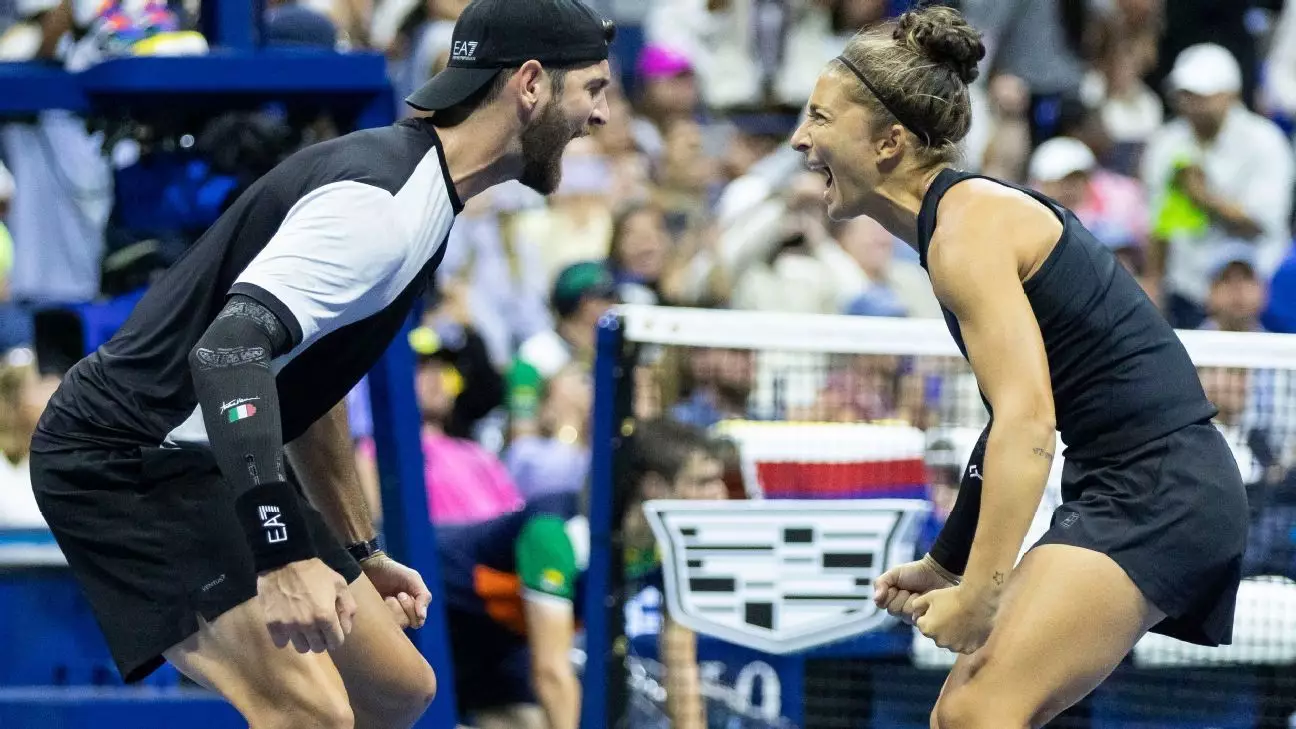The recent transformation of the U.S. Open’s mixed doubles event stands as a testament to bold innovation in a sport rooted in tradition. Historically, Grand Slam doubles tournaments have often been overshadowed by singles competitions, viewed as secondary attractions. However, the restructuring introduced by organizers for this year’s tournament aimed to breathe new life into the doubles discipline, challenging long-standing perceptions by prioritizing spectacle and crowd engagement over conventional formats. This move was met with mixed reactions—skepticism from some players and purists, but undeniable enthusiasm from fans craving excitement and dramatic performance.
What makes this shift particularly compelling is the underlying philosophy: reshaping the format to spotlight the sport’s entertainment value without sacrificing skill or integrity. By shortening sets, scheduling matches earlier in the tournament, and emphasizing mixed doubles as a standalone spectacle, organizers effectively shattered the traditional mold. This unconventional approach was a gamble with high stakes, risking alienating the traditionalist core while seeking to cultivate a broader audience. Yet, amid the controversy, what undeniably emerged was a tournament that garnered unprecedented attention and vigor, and in doing so, redefined what a doubles event can offer.
The Underdogs Who Defied Expectations
Amidst the fanfare and new format, the story of Sara Errani and Andrea Vavassori became a compelling narrative of perseverance and defiance. Coming into the tournament, doubts were rife about their chances—doubts fueled by the idea that only star singles players could draw crowds and generate interest. Yet, this duo’s journey was a sharp rebuke to such notions. Their victory was not just about winning a tennis match, but about demonstrating the power of skill developed specifically for doubles—an often undervalued art form.
Their triumph over the No. 3 seeds, Iga Swiatek and Casper Ruud, was a masterclass in strategic doubles play. Errani’s exceptional court vision and net play, combined with Vavassori’s agility and shot-making, allowed them to seize critical moments, especially in the match tiebreaker. Their gritty performance illuminated a core truth: doubles requires a nuanced set of skills that cannot simply be replicated by singles prowess. More importantly, their win served as symbolism of resilience—an assertion that every format has its own champions and stories worthy of the main stage.
In this context, Errani and Vavassori’s success was a statement that the magic of tennis is not only reserved for the superstar singles athletes. Their victory ignited hope that the doubles discipline can evolve into a more prominent, spectator-friendly format—one that celebrates teamwork, strategic finesse, and adaptability.
The Power of Spectacle and Audience Engagement
One of the most striking outcomes of this reformulation was the palpable energy coursing through Arthur Ashe Stadium. Despite skepticism about the new format diminishing the event’s prestige, the crowd was vibrant, engaged, and visibly enthralled. The packed stadium, even on a rainy day, validated the organizers’ gamble and underscored a fundamental truth: modern audiences crave more than just traditional narratives. They seek excitement, unpredictability, and emotional investment—elements that the revamped mixed doubles format delivered in spades.
The atmosphere was electric during clutch moments, especially in the decisive match tiebreak, where Errani and Vavassori held their nerve. Their ability to ascend under pressure, combined with the raucous crowd enthusiasm, created a spectacle that rivals traditional singles finals. This underscores a larger truth: innovation in sports doesn’t diminish its essence but can reinvigorate it by making it more accessible and engaging.
Such energy demonstrates that doubles, often marginalized, holds the potential for genuine star power when given the platform and presentation it deserves. It is a reminder that, in tennis as in any sport, captivating matches and emotional stories are what truly drive audience engagement. The organizers’ strategy to book top singles players alongside doubles specialists—even if the latter were excluded from the main draws—highlighted an understanding that fans want a show, not just a competition.
Reimagining the Future of Tennis Entertainment
The success of this bold venture prompts a broader reflection on the future trajectory of tennis tournaments worldwide. If the goal is to elevate doubles and showcase its unique artistry, then the U.S. Open’s experiment offers valuable lessons. It suggests that traditional formats can coexist with revamped, audience-focused models—supplementing rather than replacing historical structures.
Crucially, this shift challenges the entrenched hierarchy that often places singles tennis on a pedestal above doubles. It advocates for recognizing doubles’ sophisticated artistry—its rapid exchanges, strategic teamwork, and mental agility—as deserving of equal spectacle and respect. For the sport to maintain relevance in an era dominated by entertainment and media consumption, embracing change while honoring tradition is essential.
Looking ahead, the question remains: will these innovations endure beyond a single tournament, or are they merely a fleeting attempt at reinvention? If the momentum continues, the answer could be a paradigm shift where doubles garners its rightful spotlight, attracting top talents and dedicated audiences alike. This could herald a new chapter in tennis—one where tradition and innovation entwine, creating a richer, more dynamic sport for generations to come.

